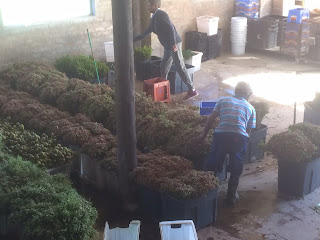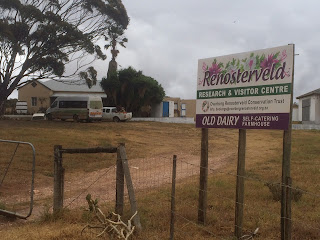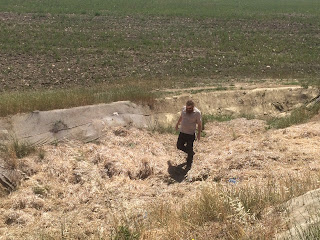By Mandi Krebs (left), Associate at Hogan Lovells, South Africa
Following the recent landmark decision of the South African Constitutional Court, in which the private and personal use of cannabis was decriminalised, together with the publication of guidelines regarding the cultivation of cannabis for medical, scientific and clinical research purposes, an enhanced interest in the cannabis industry has emerged and investors are keen to be amongst the first to capitalise on the potential growth of this “green” market.
It is well understood that there are various methods used to extract product from the cannabis plant, but what is not so clear is the regulatory classification of the extracted product. For the purposes of this article, we consider the classification of cannabis oil versus hemp seed oil.
It is important to understand how each of these products will be classified, from a South African perspective, and in order to ensure compliance with the appropriate legislative framework.
Framework regulating medicines
As a starting point, “medicines” are regulated in terms of the Medicines Act and is broadly defined to include a substance (or mixture of substances) used, manufactured or sold for use in the treatment, mitigation, modification or prevention of disease. In addition, the Medicines Act contains a list of Scheduled substances.
The local regulatory authority in South Africa (SAHPRA) controls the sale, possession and manufacture of any medicine or Scheduled substance, by providing certain conditions that need to be fulfilled prior to engaging in any such activity (e.g. this may include appropriate licensing with SAHPRA and various other regulatory or government authorities).
In order to apply for registration of a medicine or Scheduled substance, an application should be completed and submitted to SAHPRA, along with the necessary supporting documentation, including a patient information leaflet, package insert, product specifications, control procedures and manufacturing procedures.
Framework regulating foodstuffs
Conversely, where a product or substance is manufactured or sold, for human consumption, and is not a medicine as defined, then it may be regarded as being a foodstuff and will be subject to regulation in terms of the Foodstuffs Act.
Foodstuffs are not subject to a registration process in South Africa and, where a product does not display any medicinal claims and falls within the definition of a foodstuff under the Foodstuffs Act, in principle, no registrations, filings or additional documents will be required in order to sell same in South Africa.
With the above frameworks in mind, one can consider the classification of cannabis derived products.
Classification of cannabis products
Firstly, what is cannabis oil?
This is a product extracted from the cannabis flower (or bud) that would contain both cannabidiol (CBD), the non-psychoactive cannabinoid, and tetrahydrocannabinol (THC), in varying concentrations, and depending on the strain of the cannabis plant used as well as various other factors including the extraction method used or the purification method employed to isolate certain compounds. In other words, a cannabis oil could be either a CBD oil (commonly referred to as hemp derived CBD oil) or a THC oil, or a combination thereof.
In terms of the Medicines Act, CBD (when intended for therapeutic purposes) is regarded as being a Schedule 4 substance, and THC is regarded as being a Schedule 6 substance. Having regard to the global standard classification, a CBD oil must contain less than 0.3% concentration of THC in order to be classified as CBD oil.
It is interesting to note that, notwithstanding the above, the Medicines Act still classifies cannabis (i.e. the plant or any portion or product thereof), as a Schedule 7 substance save for certain scenarios, including products that are processed from cannabis seeds, which contains no more than 10 milligram per kilogram (0,001 %) of THC and does not contain whole cannabis seeds.
This classification has given rise to confusion in industry as the Scheduling of CBD has not been refined to include specific details regarding the permissible THC concentration.
If a cannabis oil falls within the broad definition of a “medicine” it will be subject to compulsory registration in terms of the Medicines Act, and where such compulsory registration is required, it would be unlawful to sell it prior to registration with SAHPRA, subject to certain limited exceptions.
Failing to comply with certain provisions of the Medicines Act may result in criminal sanction and could give rise to the imposition of a hefty fine or imprisonment.
Secondly, what is a hemp seed oil?
This is a product extracted from only the seeds of the cannabis plant using a cold press method of extraction. The oil contains no Scheduled substances (no CBD or THC) and is used in a variety of products ranging from foodstuffs, to cosmetics.
Where a hemp seed oil meets the definition of a foodstuff, it may be legally sold in South Africa without being subject to any registrations, however, the product label and the claims made thereon, would have to comply with the provisions of the Food Labelling Regulations.
Conclusion
The current South African cannabis related framework continues to cause confusion, particularly when it comes to an understanding of what constitutes hemp oil, cannabis oil and hemp seed oil, and has given rise to many opportunistic ventures.
Despite the proliferation of products on the market, SAHPRA is yet to issue commercial cannabis related licences and, as a consequence, many continue selling cannabis related products, possibly in contravention of the Medicines Act.
It remains it to be seen exactly how the local cannabis industry will grow and mature within the South African context, while our neighbours in Lesotho are leading the global push in cultivation. A clear understanding of the legal and regulatory landscape entails is imperative in order to successfully cash in on the “green rush”.
















































